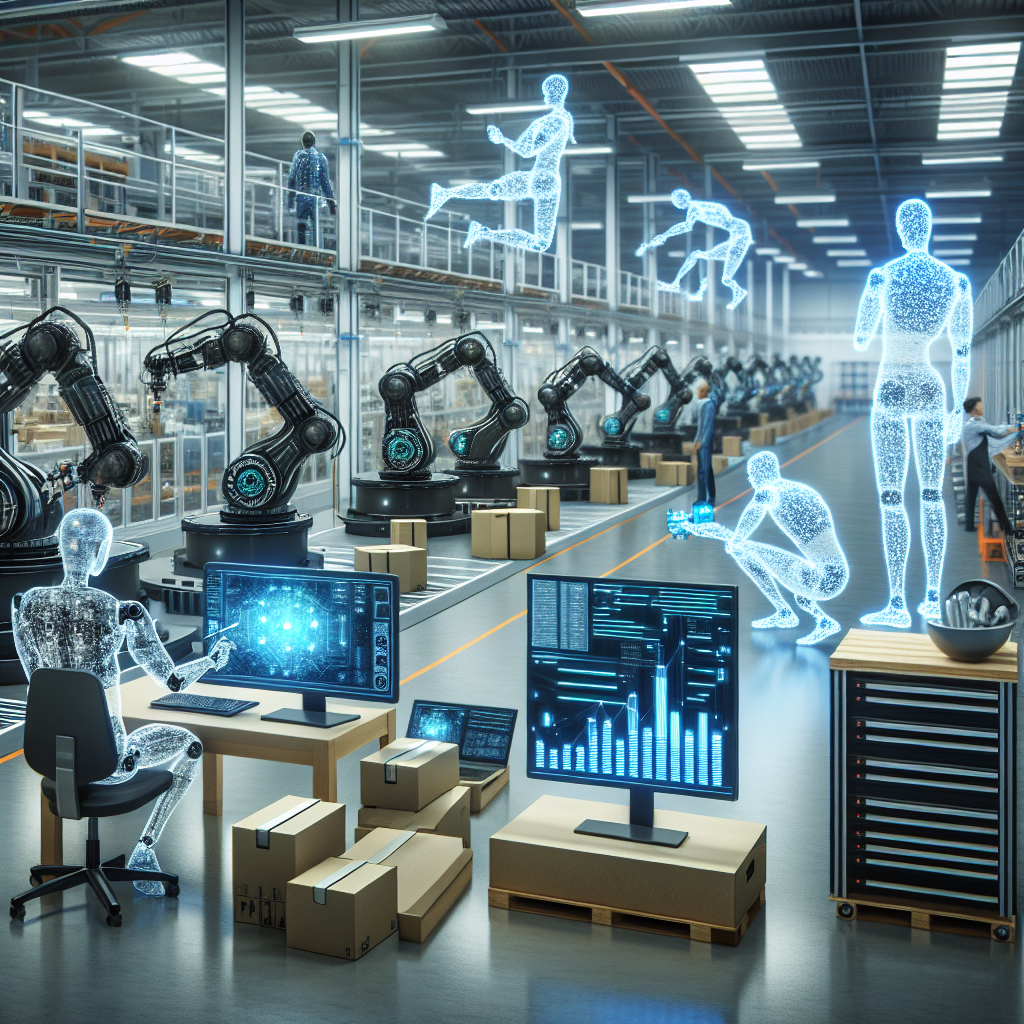The Future of Manufacturing: How Generative AI is Boosting Operational Efficiencies and Driving Innovation
Introduction
The manufacturing industry has always been at the forefront of technological advancements, constantly seeking ways to streamline processes, enhance efficiency, and drive innovation. In recent years, the rise of generative artificial intelligence (AI) has opened up a new frontier of possibilities, promising to revolutionize the way we design, produce, and optimize manufacturing operations. As we delve into the future of manufacturing, generative AI is poised to play a pivotal role in boosting operational efficiencies and driving innovation across the sector.
Understanding Generative AI
Generative AI is a branch of artificial intelligence that focuses on creating new, original content based on existing data and patterns. Unlike traditional machine learning models that analyze and classify data, generative AI algorithms have the capability to generate entirely new data, such as images, text, audio, and even 3D models. This technology leverages advanced deep learning techniques, including generative adversarial networks (GANs) and variational autoencoders (VAEs), to learn and mimic the underlying patterns and structures of the training data.
BELOW ARE SOME INSIGHTS ON WORKING AND USECASES OF GAN 👇
Boosting Operational Efficiencies
One of the primary applications of generative AI in manufacturing is its ability to optimize and streamline operational processes. By leveraging the power of generative models, manufacturers can simulate and predict various scenarios, enabling them to identify bottlenecks, minimize downtime, and improve overall productivity.
- Predictive Maintenance: Generative AI can analyze vast amounts of sensor data from manufacturing equipment and generate accurate predictions of potential failures or maintenance requirements. This proactive approach allows manufacturers to schedule maintenance activities in advance, reducing unplanned downtime and extending the lifespan of their assets.
- Supply Chain Optimization: Generative AI can model complex supply chain networks and generate optimized solutions for inventory management, logistics planning, and resource allocation. By simulating various scenarios and identifying potential disruptions, manufacturers can make informed decisions to mitigate risks and improve supply chain resilience.
- Quality Control: Generative AI models can be trained on vast amounts of data from manufacturing processes, enabling them to detect anomalies, defects, or deviations from expected patterns in real-time. This capability enhances quality control measures, reducing waste and ensuring consistent product quality.
- CodeGPT This is a specialized language model trained by Microsoft to generate code in various programming languages. In the context of manufacturing, CodeGPT could be used to generate code for automating certain manufacturing processes, controlling industrial machinery, or developing software for manufacturing operations management systems.
Driving Innovation through Generative Design
Generative AI is poised to revolutionize the design and product development phases of manufacturing. By leveraging generative adversarial networks (GANs) and other generative models, designers and engineers can explore vast design spaces and generate novel, optimized solutions that meet specific performance criteria.
- Product Design Exploration: Generative AI algorithms can generate thousands of design variants based on input parameters and constraints, allowing designers to explore a vast range of possibilities and identify optimal designs that balance aesthetics, functionality, and manufacturability.
- Topology Optimization: In the realm of additive manufacturing (3D printing), generative AI can optimize the topology of components, reducing material usage while maintaining structural integrity. This capability enables the production of lightweight, high-performance parts tailored to specific applications.
- Customized Manufacturing: Generative AI can facilitate mass customization by generating unique designs based on individual customer preferences or requirements. This capability opens up new business models and enhances customer satisfaction by providing personalized products at scale.
Challenges and Considerations
While generative AI holds immense potential for the manufacturing industry, it is essential to address several challenges and considerations to ensure its successful implementation and adoption.
- Data Quality and Availability: Generative AI models rely heavily on large, high-quality datasets for training. Manufacturers must invest in robust data collection and management strategies to ensure the accuracy and reliability of their generative AI systems.
- Interpretability and Explainability: While generative AI models can produce remarkable results, understanding the underlying reasoning and decision-making processes can be challenging. Ensuring interpretability and explainability is crucial for building trust in these systems and enabling effective decision-making.
- Ethical and Regulatory Considerations: As generative AI becomes more prevalent in manufacturing, it is essential to address ethical concerns related to data privacy, intellectual property rights, and the potential for misuse or unintended consequences. Clear regulatory frameworks and ethical guidelines must be established to govern the development and deployment of these technologies.
- Workforce Preparedness: The integration of generative AI in manufacturing will require upskilling and reskilling of the workforce. Manufacturers must invest in training programs to equip their employees with the necessary skills to operate and maintain these advanced systems effectively.
Conclusion
The future of manufacturing is inextricably linked to the advancement of generative AI technologies. By harnessing the power of these cutting-edge algorithms, manufacturers can unlock new levels of operational efficiency, drive innovation in product design and development, and gain a competitive edge in an increasingly complex and dynamic market.
However, the successful adoption of generative AI in manufacturing requires a strategic and collaborative approach, involving stakeholders from various domains, including engineers, data scientists, and policymakers. By addressing the challenges of data quality, interpretability, ethical considerations, and workforce preparedness, manufacturers can leverage the full potential of generative AI while mitigating risks and fostering responsible innovation.
As we navigate the exciting landscape of generative AI in manufacturing, it is essential to strike a balance between technological advancement and ethical considerations, ensuring that these transformative technologies are developed and deployed in a manner that benefits society while respecting fundamental principles of fairness, transparency, and accountability.


Comments
Post a Comment